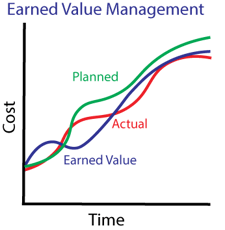Using Multi-Company in Deltek Vision: The When, Why and How
 Within Deltek Vision lies a very handy tool, which enables a firm to have multi-company functionality. However, the benefits of this multi-company functionality feature seem to elude many firms that would greatly appreciate its capabilities. So let’s talk in detail about multi-company functionality and the why, when and how firms should use this fantastic feature.
Within Deltek Vision lies a very handy tool, which enables a firm to have multi-company functionality. However, the benefits of this multi-company functionality feature seem to elude many firms that would greatly appreciate its capabilities. So let’s talk in detail about multi-company functionality and the why, when and how firms should use this fantastic feature.
Intro into Deltek Vision Multi-Company
Basically the need for a multi-company environment comes down to having to track a separate entity with its own tax id number in a single Deltek Vision database. Some of the scenarios that require multi-company management include:
- Banking relationships
- Investments and/or holding company requirements
- Tax reporting
- Professional licensing requirements
- Foreign country reporting requirements
Additionally, the need for intercompany billing can occur when two or more related companies make payments on behalf of the others. The most common reason for intercompany billing is the sharing of labor resources between companies that have separate payrolls and/or making vendor payments for another related company.
When a firm decides to utilize multi-company functionality, it is recommended that sub-ledgers be set up to track the due to and from, and clear intercompany balances. This creates the ability to use both the AP and AR aging reports for the intercompany balances.
Determine Internal Pricing Structure
Upon implementing multi-company functionality in Deltek Vision, firms must determine what internal pricing structure to adopt. The options are:
- Re-class only - moves the transaction to intercompany AR/AP at cost
- Project Centric - leaves the transaction on the books of the project’s company with some amount of compensation also moving to keep the loaning organization whole
- Employee Centric - moves the transaction back to the employee’s company with some amount of revenue moving back as well
- High Accountability – which uses work breakdown structure to manage transactions and point directly to the company who owns the transaction
Keep in mind, there is a lot of flexibility within the options above. Different scenarios can be created for different transaction types. Also, by order of operation, the various options can be overwritten at the individual company level or at the lowest work breakdown structure level by project.
Intercompany billing makes accounting’s job easier in regard to multi-company transactions. When transactions are made to projects not in the home company (company where the transaction is being posted), invoices and vouchers are created through a series of postings that are reflected in GLs of the respective companies. These invoices and vouchers also appear on the AR and AP aging reports noted above. Accounting can then clear the reports using standard check processing and cash receipts.
More Benefits of Multi-Company
Using Deltek Vision’s multi-company functionality provides another benefit to firms with consolidated reporting. Consolidated reporting allows a view of the performance of all the companies within the database. Consolidated groupings can represent all companies or a cross section of companies depending on the needs of company leadership. The consolidation process incorporates standard eliminations of configured control accounts as well as client-defined accounts, such as capital investments in related companies. Consolidations are “memo” entries and not posted to the GL.
A multi-company database permits each company to maintain a unique GL while still only creating one set of shared GL account numbers. Furthermore, firms can restrict GL account numbers, and other master records can be shared and/or restricted as well. Also, Vendors can be shared. However, the accounting tab is company specific for account and 1099 purposes.
In addition to the benefits mentioned above, the multi-currency function works in tandem with multi-company to allow firms to have unique GL/functional currency. This is a great feature for firms that work internationally. Lastly, the consolidation process can include GAAP compliant currency translation and a gains/losses entry.
Final Thoughts on Deltek Vision Multi-Company
Firms of all sizes can benefit in many ways by using the multi-company functionality that is part of the core capabilities in Deltek Vision. Being aware of when, why and how to use a multi-company database will help your firm make important business decisions and operate efficiently. For more information, contact Full Sail Partners here.



 For project-based firms, measuring current firm performance is the most significant indicator of future firm performance. Furthermore, by using trend data, firms can forecast cost and schedule variances in the early stage of a project. A preferred method by project managers to factor this trend data is the earned value management technique.
For project-based firms, measuring current firm performance is the most significant indicator of future firm performance. Furthermore, by using trend data, firms can forecast cost and schedule variances in the early stage of a project. A preferred method by project managers to factor this trend data is the earned value management technique. 
 Our first inclination when the new FASB 606 was announced was this wouldn’t impact many of our Deltek Vision clients. But after more insight, we recognize this has a tremendous impact on our clients. The rule states applicability to ALL entities that deliver goods or services. Though many believe that GAAP, FASB, SOX and other guidelines are good rules to follow regardless of any statutory relevance, the reality is if we are not being overseen we tend to be somewhat lax in compliance.
Our first inclination when the new FASB 606 was announced was this wouldn’t impact many of our Deltek Vision clients. But after more insight, we recognize this has a tremendous impact on our clients. The rule states applicability to ALL entities that deliver goods or services. Though many believe that GAAP, FASB, SOX and other guidelines are good rules to follow regardless of any statutory relevance, the reality is if we are not being overseen we tend to be somewhat lax in compliance. For project-based firms, timesheets are essential to ensure that an employee’s time is reflected to a specific project. I’m sure you already knew this, but do you manage timesheets correctly in Deltek Vision? Here are some facts and best practices for different scenarios to help you better manage timesheets in Deltek Vision.
For project-based firms, timesheets are essential to ensure that an employee’s time is reflected to a specific project. I’m sure you already knew this, but do you manage timesheets correctly in Deltek Vision? Here are some facts and best practices for different scenarios to help you better manage timesheets in Deltek Vision. Most firms that I work with utilize independent contractors to supplement their workforce. This isn’t a blog about “walks and talks like an employee, must be an employee.” For that, I recommend a good labor attorney. However, what I am going to clue you in on is about the proper way to track and account for independent contractor’s time in Deltek Vision.
Most firms that I work with utilize independent contractors to supplement their workforce. This isn’t a blog about “walks and talks like an employee, must be an employee.” For that, I recommend a good labor attorney. However, what I am going to clue you in on is about the proper way to track and account for independent contractor’s time in Deltek Vision.
 You know you have spent your whole workweek devoted to a specific project, but you’re only showing 35 hours being billed/charged to the project. Where did the value of those 5 hours go? In many cases, these missing hours can be attributed to non-billable labor, and many AEC firms overlook the importance of documenting how this time is spent. However, accurately accounting for non-billable labor is extremely important to track accurate project performance.
You know you have spent your whole workweek devoted to a specific project, but you’re only showing 35 hours being billed/charged to the project. Where did the value of those 5 hours go? In many cases, these missing hours can be attributed to non-billable labor, and many AEC firms overlook the importance of documenting how this time is spent. However, accurately accounting for non-billable labor is extremely important to track accurate project performance.
 It’s finally fall again and you know what that means, the leaves are changing color and the temperature is dropping, but most importantly - football is back and the wait for our favorite teams to take the field is finally over. Nevertheless, what does football and resource planning have to do with each other? Simple, coaches are like project managers, their resources are the players, and the project is the season. So what we can learn from football coaches to become more effective project managers?
It’s finally fall again and you know what that means, the leaves are changing color and the temperature is dropping, but most importantly - football is back and the wait for our favorite teams to take the field is finally over. Nevertheless, what does football and resource planning have to do with each other? Simple, coaches are like project managers, their resources are the players, and the project is the season. So what we can learn from football coaches to become more effective project managers?